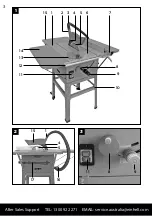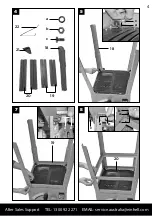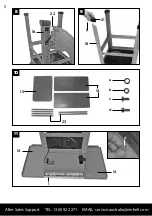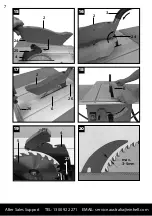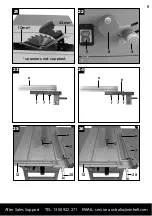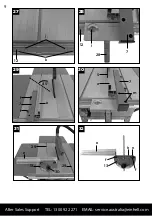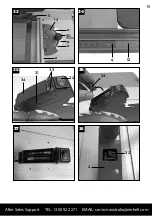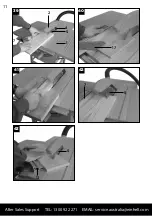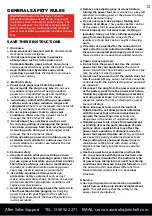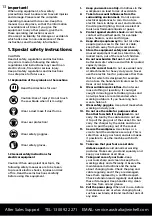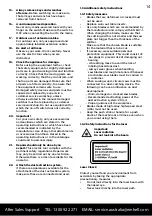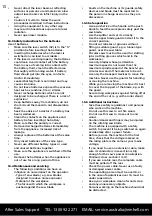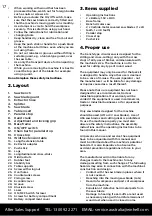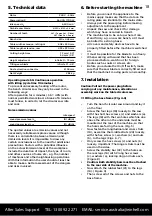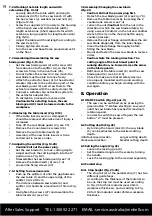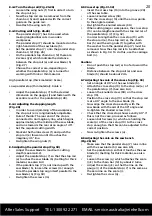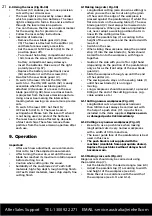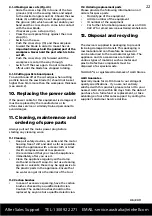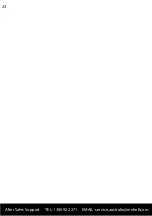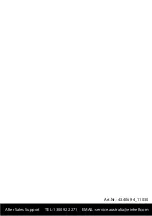
15
After Sales Support TEL: 1300 922 271 EMAIL: [email protected]
•
Faults on the machine or its guards, safety
devices and blade must be reported to
the person in charge as soon as they are
discovered.
1.3.5 Safe operation
•
Use a push stick or the handle with a push
block to feed the workpiece safely past the
saw blade.
•
Use the splitter and set it correctly.
•
Use the upper blade guard and set it to the
correct position.
•
Do not cut rebates or grooves without
fitting a suitable guard, e.g. a tunnel-type
guard, over the saw table.
•
Circular saws must not be used for slotting
jobs (cutting grooves which end in the
workpiece).
•
Use only blades whose permissible
maximum speed is not lower than the
maximum spindle speed of the bench-type
circular saw and of the material to be cut.
•
Use only the transport devices to move the
machine. Never use the guards for handling
or moving the machine.
•
While you are moving the machine it is best
to cover the top part of the blade, e.g. with
the guard.
•
Secure long workpieces against falling off at
the end of the cut (e.g. with a roller stand)
1.3.6 Additional instructions
•
Give these safety regulations to all persons
who work on the machine.
•
Do not use this saw to cut fire wood.
•
Do not use this saw to cross-cut round
wood.
•
Caution! Hands and fingers may be injured
on the rotating saw blade.
•
The machine is equipped with a safety
switch to prevent it being switched on again
accidentally after a power failure.
•
Before you use the machine for the first
time, check that the voltage marked on
the rating plate is the same as your mains
voltage.
•
If you need to use an extension cable, make
sure its conductor cross-section is big
enough for the saw’s power consumption.
•
Minimum cross-section: 1 mm
2
.
•
If you use a cable reel, the complete cable
must be pulled off the reel.
•
Check the power cable. Never use a faulty
or damaged power cable.
•
The operating person must be over 18, or
in the case of apprentices over 16, must be
under supervision.
•
Keep your workplace clean of wood scrap
and any unnecessary objects.
•
Persons working on the machine should not
be distracted.
•
Never direct the laser beam at reflecting
surfaces or persons or animals. Even a low
output laser beam can inflict injury on the
eye.
•
Caution: It is vital to follow the work
procedures described in these instructions.
•
Using the equipment in any other way
may result in hazardous exposure to laser
radiation.
•
Never open laser module.
1.3.3 Safety instructions for the batteries
Use of batteries
•
Make sure the laser switch (32) is in the “0”
position before inserting the batteries.
•
Inserting the batteries when the laser is
switched on can lead to accidents.
•
If the laser is used improperly, the batteries
could leak. Avoid contact with the battery
fluid. In case of coming into contact with
the battery fluid, clean the affected area
thoroughly with running water. If battery
fluid should get into the eyes, contact a
doctor immediately.
•
Leaked battery fluid is an irritant and may
cause skin burns.
•
Do not leave batteries exposed to excessive
heat such as sunshine, fire or similar.
•
Never recharge batteries which are not
designed to be recharged. There is a risk of
explosion!
•
Keep batteries away from children, do not
short-circuit them and do not disassemble
them.
•
Seek the advice of a doctor if a battery has
been swallowed.
•
Clean the contacts on the appliance and
battery before inserting the battery.
•
Make sure that the polarity is correct.
•
Remove discharged batteries immediately
from the appliance. Increased risk of
leakage.
•
Always replace all the batteries at the same
time.
•
Only insert batteries of the same type.
•
Never use different battery types or used
and unused batteries together.
•
Make sure the appliance is switched off after
use.
•
Remove the batteries when the appliance is
out of use for a long period of time.
1.3.4 Maintenance and servicing
•
The following conditions can have an
influence on noise impact on the operator:
- Type of saw blade (e.g. saw blades
designed to reduce noise exposure)
- Material of the workpiece
- The force with which the workpiece is
pushed against the saw blade



